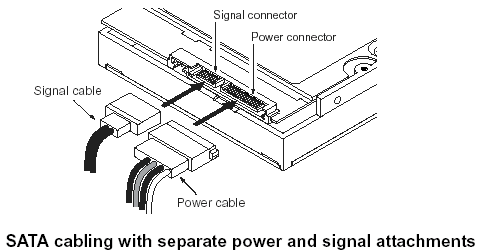

- #SEAGATE SEATOOLS MAXIMUM SIZE HOW TO#
- #SEAGATE SEATOOLS MAXIMUM SIZE SERIAL#
- #SEAGATE SEATOOLS MAXIMUM SIZE SOFTWARE#
- #SEAGATE SEATOOLS MAXIMUM SIZE CODE#
- #SEAGATE SEATOOLS MAXIMUM SIZE OFFLINE#
It's more like a standard procedure that we do for all newly acquired HDDs. There's not a single source that told me to do this. I want to make sure this doesn't happen to others and we can put together some better information about this feature set of the drives. If you were recommended to change to 4k somewhere, can you please share where you found that information. It seems to me that the drive only responses to a very limited set of commands in this state.
#SEAGATE SEATOOLS MAXIMUM SIZE SERIAL#
SeaChest -info could show certain fields, such as serial number, but most feature related fields are "not supported". I have tried various combination of seachest and OSes but none could set the sector size back to 512B. Sorry that you are dealing with this, but thank you for reporting it to us.

I would contact Seagate support to see if anything can be done to assist you before you attempt this. So how do you determine whether it's the drive or the adapter having an issue? Well you would have to break them apart and plug the drive into a SATA interface to test it and find out, but I do NOT recommend you do that right now.
#SEAGATE SEATOOLS MAXIMUM SIZE CODE#
That adapter code expects the drive to have a 512B sector size, anything else will cause it to become unresponsive to the host system. Part of the reason for this is that back in the Windows XP days, many implemented a emulated 4k sector size to the host, but that code may still live inside current adapters. It's not possible to tell which one responds well and which one doesn't. Some USB adapters do not properly handle changes like this, even after power cycling them, but some of them do.
#SEAGATE SEATOOLS MAXIMUM SIZE HOW TO#
I will add an additional warning to SeaChest_Lite ahead of this operation to help warn about this kind of issue.įrom the sounds of it, the tool returned with success, which is a good sign that the drive itself probably isn't dead, but the USB adapter may not know how to handle the 4k block size of the internal drive now that this has been done. There is no real benefit to switching to 4k at home, especially on USB drives. This command set is made to allow customers to setup drives before integrating them into their environment, before any data is written to them, but it's purpose is really meant for advanced configurations in large scale storage. The commands to change the sector size reformat the drive quickly, but if interrupted for any reason can become unresponsive or have other issues. The best bet to fix it is to change it back to 512B sector size using the same command setSectorSize option, but specifying 512 instead of 4096. I use Ubuntu 20.04 as well for most of the development on our Linux tools. I recommend contacting Seagate's customer support to see if there is anything that can be done to assist you.
#SEAGATE SEATOOLS MAXIMUM SIZE SOFTWARE#
I'm one of the software engineers that works on SeaChest and do not have product specific information. FWIW, uas was disabled for that HDD on Linux so that I could use smartctl to test it before I ran seachest lite The long test finished without any error. Is this drive dead? Anyway to bring it back? If setSectorSize bad for USB attached drives? If so why am I allowed to issue it? SeaTools for Windows took a very long time to scan the disks (half an hour) but couldn't recognize it either. After a very long wait, Windows recognized it as a 1.8 TB drive but couldn't do anything about it. I tried Set Max LBA but the command failed.Īlso tested it on another machine running Windows 10.
#SEAGATE SEATOOLS MAXIMUM SIZE OFFLINE#
The drive would become offline (as noted in dmesg) if I issue any command. I can't run smartctl or seachest on it any more.

My Linux system recognized it as a 2 TB disk drive but any operation will block forever. I could remove the drive and boot up the system normally. The drive's blue light would always blink, with no apparent head seek could be heard. Now the system can't boot when the USB HDD is attached, because it kinda froze on detecting that drive. The operation succeeded with no error, but the drive became sorta bricked. On a Ubuntu 20.10 (running Linux 5.8) system, I used SeaChest Lite (downloaded from official website on ) and set a USB Seagate External Hard Drive 16TB (STEB16000400) to sector size 4096.


 0 kommentar(er)
0 kommentar(er)
